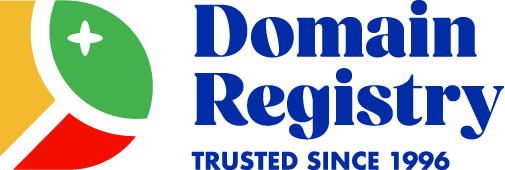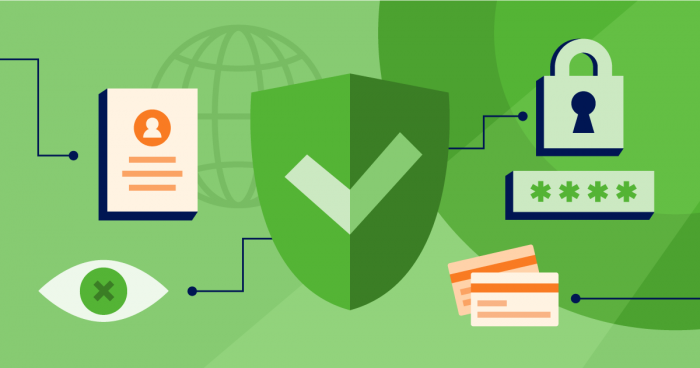If choosing a domain name wasn’t taxing enough, another consideration to add to the list alongside “memorable” and “on brand” is “one that won’t get you in legal trouble.” Trademark infringement happens when you intentionally or unintentionally use trademarked content (or something confusingly similar) without authorization from the trademark owner. Infringement is a weighty matter, and the legal proceedings can swallow up a significant amount of time and money for both parties.
Once you have a desired domain name, prior to domain registration, it’s time to begin your research. You can start by searching registered trademark databases and the internet for unregistered (“common law”) trademarks.
But just because your domain name contains a word otherwise protected by a mark, doesn’t necessarily mean you’re infringing—it just means you’ll have to ask yourself a few questions about use case and timeline. Let’s get into the brass tacks.
Domain Names & Trademarks
There aren’t any hard-and-fast rules for the relationship between domain names and trademarks—the connection lies within the content of the domain’s website and the intent of the individual who registered the domain.
Basic Definitions
It’s easier to understand how domains and trademarks are connected after you learn their definitions.
- What is a domain name?
A domain name is a unique, user-friendly web address (like domainregistry.com) associated with an IP address that takes you to a specific place on the internet. It consists of a TLD (top-level domain) like .com or .org, and an SLD (second-level domain) like “domainregistry.” - How can trademark infringement apply in domain names?
On the surface, trademarked words in the SLD of your domain name may work fine—after all, there are millions of marks on the US trademark register, making it near impossible to avoid a trademarked word or two. But if you dig deeper and find your website content steals web traffic and sales or tarnishes and “dilutes” the reputation of the original trademark—you might have trademark infringement on your hands.
Infringement vs. Overlap
Overlap refers to the words within your domain name that are identical to an existing trademark, but without the issue of confusion—someone with a registered or common law trademark doesn’t automatically own all uses of the word or words in question.
- Does it overlap without confusion?
In concrete terms, different geographic areas and different business types and products mean both parties can peacefully coexist, so long as no one is leveraging anyone else’s goodwill or reputation in order to make money. - Can infringement reach the realm of cybersquatting?
When a domain is registered with the bad faith intent to scam or deceive customers and profit off of someone else’s trademark, infringement takes a turn into a cybercrime known as cybersquatting—which has its own set of penalties.
Trademark Due Diligence
One way to suss out similar instances of your desired domain name is to conduct a clearance search through the U.S. Patent and Trademark Office (USPTO) and state trademark databases and registers. Steer well clear of choosing words or phrases that have a “likelihood of confusion”—i.e., aren’t easily distinguishable from existing trademarks within your business industry or geographical area, no matter how many good reasons you have for choosing that domain name.
Searching for Trademarks on a Federal Level
To search for federally registered and pending marks that may be identical or similar to your desired domain name, use the USPTO Trademark Electronic Search System (TESS). This search tool is free to use, and shows you every U.S. trademark that has been registered or applied for. You’ll find instructions on how to conduct a proper search to get the most out of the system, such as what the database includes and how to interpret the results (with examples to help illustrate).
Searching TESS is one part of a thorough clearance search—the next is checking out the state trademark databases and performing internet searches.
Searching for Trademarks on a State Level
In tandem with your federal search, your state trademark database search is equally as important—and the USPTO has compiled a State Trademark Information Links page to help you out.
To search for unregistered marks of other parties who have trademark rights but no federal registration (or “common law” rights), search online for sites that reference similar marks related to yours. These types of marks can be as strong as a registered mark if they were in use first, and are based on use of the mark in commerce in specific geographic areas.
Your clearance search is complete once you’ve combed through federal and state databases, as well the rest of the internet (including social media sites—related handles are easier to find and may be worth following up on).
International Considerations
Global trademark infringement is a complex dimension of international legal frameworks controlled by the World Intellectual Property Organization (WIPO).
Visit the WIPO website if you’d like to learn more on the subject.
Legal Consequences and Penalties
Trademark clearance searches are effective—most of the time. Despite your best (or worst) efforts, someone could still make an infringement claim against your domain name. If your name does infringe, ICANN’s established Uniform Domain-Name Dispute-Resolution Policy (UDRP) kicks in to handle the dispute. Most likely, the resolution will be resolved by agreement, court action, or arbitration. Only then will a registrar cancel, suspend or transfer a domain name.
The lion’s share of disputes between trademark owners and domain registrants come from the trademark owner pursuing legal action through administrative proceedings or litigation.
If you lose in court, you’ll be faced with losing the domain name, paying for damages (including the winning party’s legal costs), and potentially having to change your business’s name.
- What is reverse domain name hijacking?
You are a victim of reverse domain name hijacking, or RDNH in domain name dispute cases, when someone tries to coerce or intimidate you to surrender your domain name under the guise of trademark ownership. These false claims of cybersquatting against the victim are a bad faith attempt to secure a domain name through harassment. The “trademark owner” may even file a UDRP complaint against you and successfully obtain transfer of your domain name away from you.If you end up on this battlefield, contact the owner and see whether amicable resolution is possible so you can avoid the expense and time involved in litigation. Otherwise, you may need to file a lawsuit to fight or recover your domain name. - Is it worth hiring an attorney if I’m involved in an infringement or RDNH case?
The answer to this is determined on a case-by-case basis. The UDRP process is usually less expensive and the proceedings are completed in a more timely manner. Otherwise, a trademark or domain name attorney can help you respond properly to a dispute or work with you until a dispute is put to rest.



